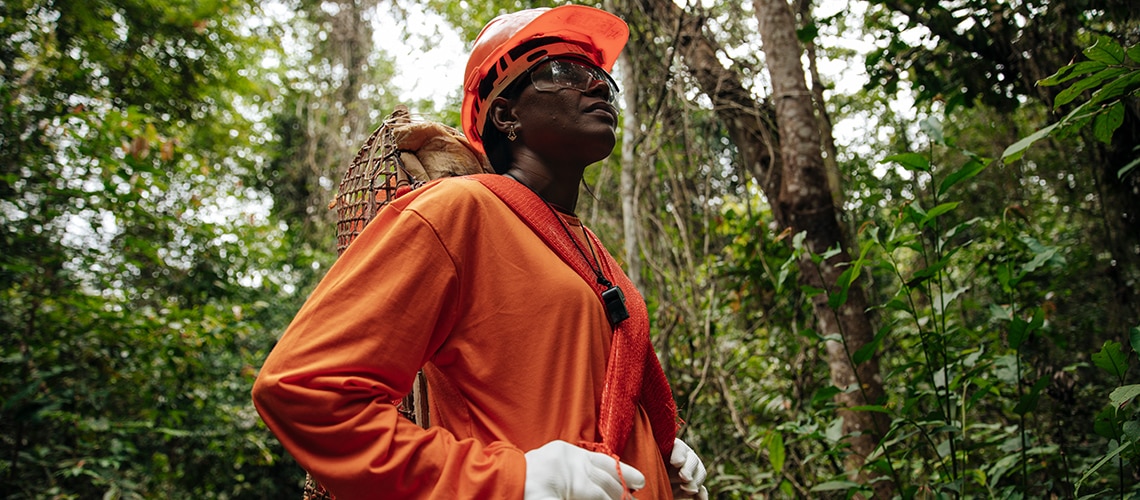
Nov 14, 2025 | Case Study | 6 minute read

Nov 14, 2025 | Case Study | 6 minute read
The Amazon rainforest is one of the world’s most vital ecosystems, home to unparalleled biodiversity and a source of livelihood for millions. Preserving this natural wealth requires innovative approaches that balance environmental stewardship with economic opportunity. In recent years, organizations like Dow and our collaborators have helped pioneer strategies that integrate community-based conservation in the Amazon rainforest, biodiversity preservation, bioeconomy practices and a robust carbon accounting approach to drive meaningful change.
This article explores how that work is expanding in the Amazonian municipality of Breu Branco in Pará, Brazil.
The journey of the Conservation that Transforms program began in 2021 with the launch of Project Ybá, a pilot initiative supported by Dow’s Business Impact Fund in collaboration with Instituto Peabiru and The Nature Conservancy. Our first commercial partners, Natura cosmetics brand and Univar Solutions, played a crucial role in supporting Project Ybá, which was designed at its core to promote conservation, drive social development and foster innovative business solutions.
As Project Ybá progressed, valuable insights and lessons emerged, prompting us to refine and enhance our approach to regional development—particularly in Breu Branco, where our operations include the production of silicon metal, a feedstock for silicone production. This evolution paved the way for the expansion of the initiative into what is now known as the Conservation that Transforms program. Supported on a global scale by Dow, the program has grown to become our company’s largest conservation endeavor.
Today, Conservation that Transforms stands out for its integrated approach—it not only addresses local community needs but also combines community development, nature conservation, biodiversity preservation and carbon mitigation. The program supports our broader sustainability strategies, exemplifying a new model for the responsible corporate stewardship of water and nature and collaborative environmental action.
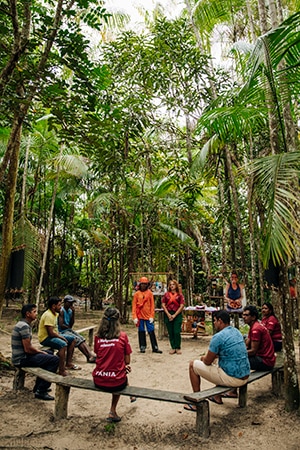
The Conservation that Transforms program is a model for community-based conservation in Brazil, where local stakeholders are empowered to lead conservation efforts, ensuring that solutions are culturally relevant and sustainable within the region. To date, the program contributes to the conservation of about 32,000 hectares of biodiverse land in the Amazon rainforest, including 10 fauna and 7 flora species that are threatened with extinction.
Take a closer look at the key initiatives and collaborations included in the Conservation that Transforms program in Breu Branco, Pará, Brazil.
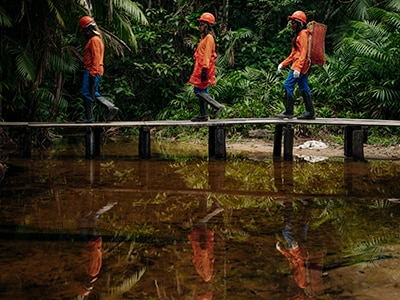

Project Ybá is a flagship initiative that empowers the local Vila Mamorana community through the sustainable extraction of non-timber bio-actives. This project has supported the development of a cooperative focused on conserving standing forests and biodiversity, while generating income for families in the region. Such efforts exemplify the potential for a sustainable bioeconomy in the Amazon rainforest, where economic growth and environmental protection reinforce one another.
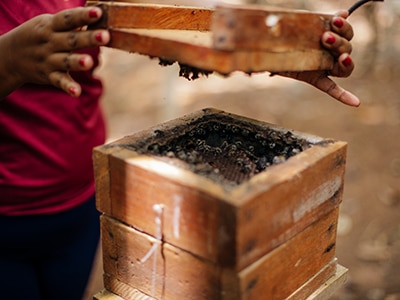
Project Jataí is transforming lives in Vila Mamorana by helping local communities earn sustainable income through stingless beekeeping. Focused on empowering women and families, the initiative provides training in biology, entrepreneurship and environmental stewardship. Through supporting biodiversity, this project promotes income generation, social capital and sustainable livelihoods.

For over two decades, Dow has collaborated with Torpedos Mirim in Breu Branco. This nonprofit organization provides free basic education and cultural activities for public school children and adolescents. The initiative has benefited over 2,400 children aged 8 to 14 since its inception.
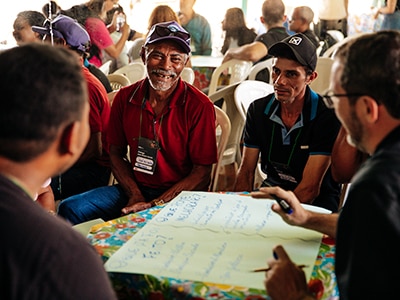
As the Conservation that Transforms program matures, we aim to develop and implement new projects under the Partners for the Amazon Platform (PPA). These opportunities will be evaluated based on assessments of local needs and in collaboration with community leaders.
The Dow Business Impact Fund that launched the Conservation that Transforms program leverages cross-sector expertise to develop innovative solutions that address significant global sustainability challenges. As an extension of the program’s aims, the REDD+ Caiarara Project, currently being implemented in Dow's owned rainforest in Breu Branco, Pará, Brazil, has emerged as Dow’s first nature-based solutions carbon credit initiative.
Carbon credits represent the reduction or removal of one metric ton (MT) of carbon dioxide that is either to be removed from the atmosphere or prevented from being emitted. They allow companies, governments and individuals to offset emissions—especially when internal reductions are not immediately feasible.1
The REDD+ Caiarara Project will generate high-integrity carbon credits. The project is in the process of verification under Verra’s VM0048 methodology greenhouse gas accounting and is eligible for the Gold Seal for biodiversity and climate under the CCB Standard, further validating its effectiveness. By implementing rigorous carbon accounting practices, we ensure transparency and credibility in our approach to climate commitments and carbon credit offerings.
Long-term financing for projects within the Conservation that Transforms program will be supported through the sale of these carbon credits, creating a sustainable funding model that advances ecosystem preservation efforts and local social impact initiatives.
The preserved area of Amazon rainforest that is included in the REDD+ Caiarara Project, about 32,000 hectares total, has the potential to produce roughly 762 MT/hectare of carbon credit stock—more than twice the Amazonian average.
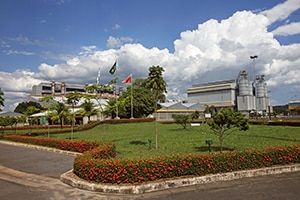 The Dow Brazil Breu Branco facility exemplifies our robust water stewardship and land management approach. Established in 1988, the site plays a key role in Dow's global silicone supply chain, producing silicon metal for a diverse array of industries including personal care, construction, transportation and electronics. The facility’s operations are strategically integrated into natural resources, enhancing reliability, competitiveness and sustainability attributes across our product portfolio.
The Dow Brazil Breu Branco facility exemplifies our robust water stewardship and land management approach. Established in 1988, the site plays a key role in Dow's global silicone supply chain, producing silicon metal for a diverse array of industries including personal care, construction, transportation and electronics. The facility’s operations are strategically integrated into natural resources, enhancing reliability, competitiveness and sustainability attributes across our product portfolio.
The Breu Branco site spans 45,000 hectares, a majority of which is preserved as native Amazon rainforest. The forest is home to approximately 343 species of plants and animals, including 17 species that are threatened with extinction. The remaining portion of the site is dedicated to sustainably managed eucalyptus agriculture, harvested in accordance with Forest Stewardship Council (FSC) guidelines. This farming operation supports the facility’s silicon metal production.
Since 2025, the facility has operated entirely on renewable energy, further reducing its environmental footprint.
Our site in Breu Branco demonstrates how industry operations can align with ecological preservation, delivering economic value while fostering ecosystem preservation.

Our integrated approach to Amazon rainforest conservation demonstrates how businesses can be powerful allies in preserving the planet’s most vital ecosystems. Through supporting community-based conservation, preserving biodiversity, fostering a sustainable bioeconomy and implementing robust carbon accounting, we aim to lead the way alongside our customers and collaborators.
Conserving the Amazon is not only an environmental necessity—it’s an opportunity to build resilient communities, drive economic growth and secure a sustainable future for generations to come.
This case study was developed by a cross-discipline team representing sustainability, geographic and commercial expertise across Dow. To understand how we view the intersection of business growth and purpose, take a look at our report highlights.